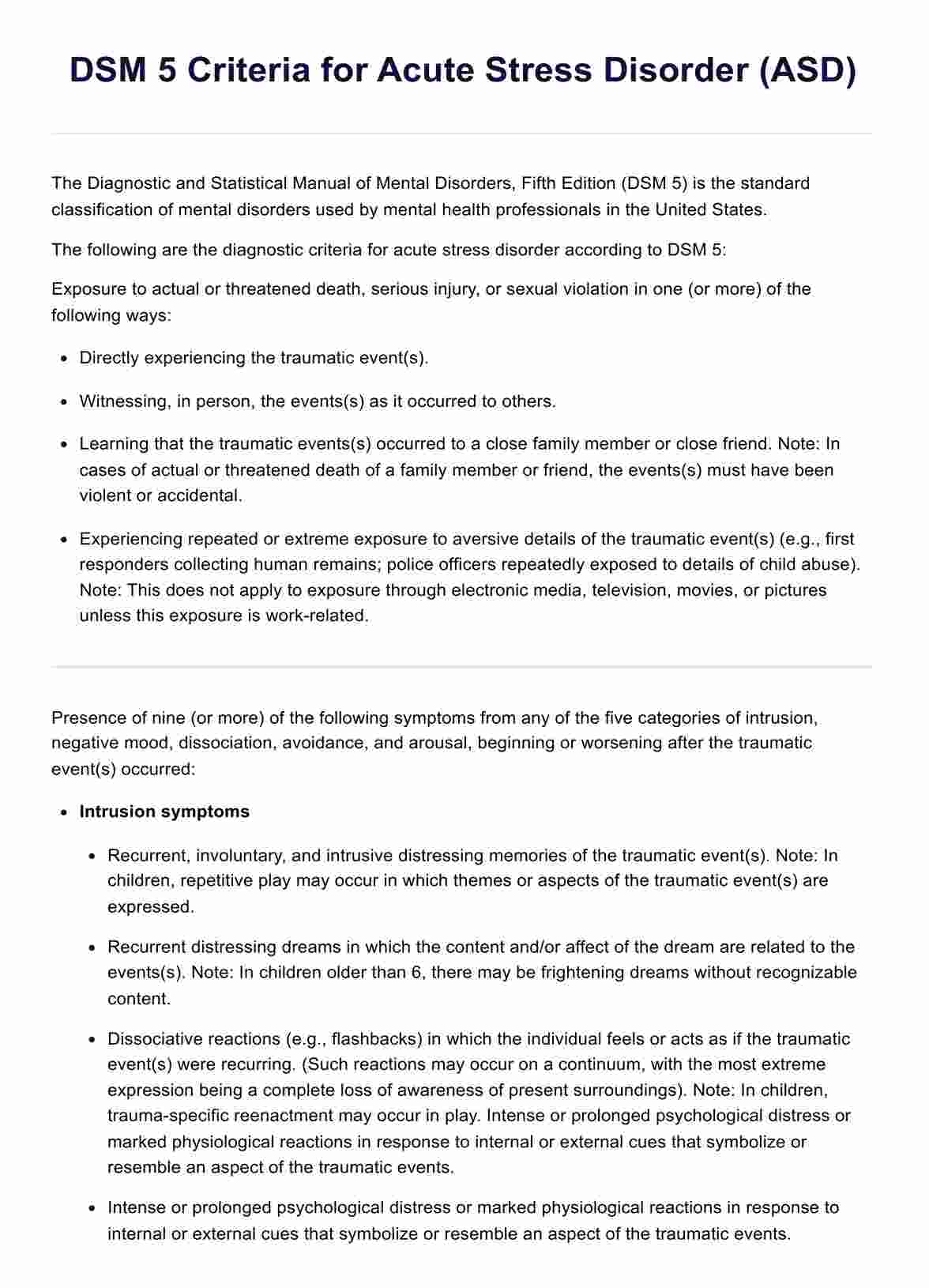Symptoms typically begin immediately after the traumatic event, usually within three days, and can last up to one month. However, some individuals may experience delayed onset of symptoms.

DSM 5 Criteria for Acute Stress Disorder (ASD)
Learn about the DSM 5 Criteria for Acute Stress Disorder (ASD). Download a free PDF handout for your practice.
Use Template
DSM 5 Criteria for Acute Stress Disorder (ASD) Template
Commonly asked questions
Yes, children and teenagers can develop acute stress disorder. Parents and guardians must know potential signs and symptoms to seek appropriate treatment for their child.
Several risk factors can increase the likelihood of developing acute stress disorder, including a history of previous trauma or PTSD, a family history of mental health disorders, and poor social support. It is essential to seek professional help if you think you may be at risk for developing ASD.
EHR and practice management software
Get started for free
*No credit card required
Free
$0/usd
Unlimited clients
Telehealth
1GB of storage
Client portal text
Automated billing and online payments











